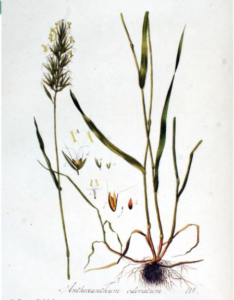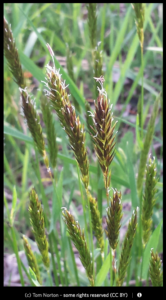Sweet Vernal Grass
go.ncsu.edu/readext?1001976
en Español / em Português
El inglés es el idioma de control de esta página. En la medida en que haya algún conflicto entre la traducción al inglés y la traducción, el inglés prevalece.
Al hacer clic en el enlace de traducción se activa un servicio de traducción gratuito para convertir la página al español. Al igual que con cualquier traducción por Internet, la conversión no es sensible al contexto y puede que no traduzca el texto en su significado original. NC State Extension no garantiza la exactitud del texto traducido. Por favor, tenga en cuenta que algunas aplicaciones y/o servicios pueden no funcionar como se espera cuando se traducen.
Português
Inglês é o idioma de controle desta página. Na medida que haja algum conflito entre o texto original em Inglês e a tradução, o Inglês prevalece.
Ao clicar no link de tradução, um serviço gratuito de tradução será ativado para converter a página para o Português. Como em qualquer tradução pela internet, a conversão não é sensivel ao contexto e pode não ocorrer a tradução para o significado orginal. O serviço de Extensão da Carolina do Norte (NC State Extension) não garante a exatidão do texto traduzido. Por favor, observe que algumas funções ou serviços podem não funcionar como esperado após a tradução.
English
English is the controlling language of this page. To the extent there is any conflict between the English text and the translation, English controls.
Clicking on the translation link activates a free translation service to convert the page to Spanish. As with any Internet translation, the conversion is not context-sensitive and may not translate the text to its original meaning. NC State Extension does not guarantee the accuracy of the translated text. Please note that some applications and/or services may not function as expected when translated.
Collapse ▲You may have noticed seeing these seedheads in your pastures and hayfields. It probably resembled fescue from a glance before the seedheads emerged. It is pretty common in our area but is often overlooked. If you noticed the amount of forage your pastures produced was lower and you notice these seedheads, there is a good chance that your land is trying to tell you something.
“Sweet Vernal Grass, Anthoxanthum odoratum, came to the US from Europe as a forage crop. It is native to acidic pastures in southern Europe and northern Africa. It is a cool-season perennial grass that puts up a seedhead very early, about three weeks or so earlier than tall fescue. Forage nutritive value is high, but is very low yielding, so it is not desirable as a pasture crop in our environment” (Kentucky Forage News, 2024). The grass does well in soils with poor fertility and low pH. That being said, you are more likely to see it in fields that have not had a lot of nutrients and lime applied. Since it is a cool season grass, spring is its prime growing season. That is why it is noticed in the first cutting of hay. Once we get closer to summer, it goes dormant and goes unnoticed. Fields are still likely to be less productive if there is a well-established stand of sweet vernal grass. The more sweet vernal grass becomes prevalent, the higher the chance it will choke the fescue forage out.
If you have noticed this grass coming up or taking over your fields, a quick soil test should be completed to know exactly what nutrients the soil is lacking and to know what the soil pH is. More than likely, lime will need to be applied to help neutralize the soil. Since this grass prefers soils with a lower pH, liming pastures and hay fields will probably be the most economical plan to help eliminate it. Overseeding or reseeding pastures in the fall would also be a wise decision to help renovate your fields. With input prices rising, it is easy to let soil and pasture health and fertilization slip away, but in the long run, it will be easier and more profitable to maintain proper pasture and soil management.
Here is a link to the NC State Extension Plant ID page for sweet vernal grass






